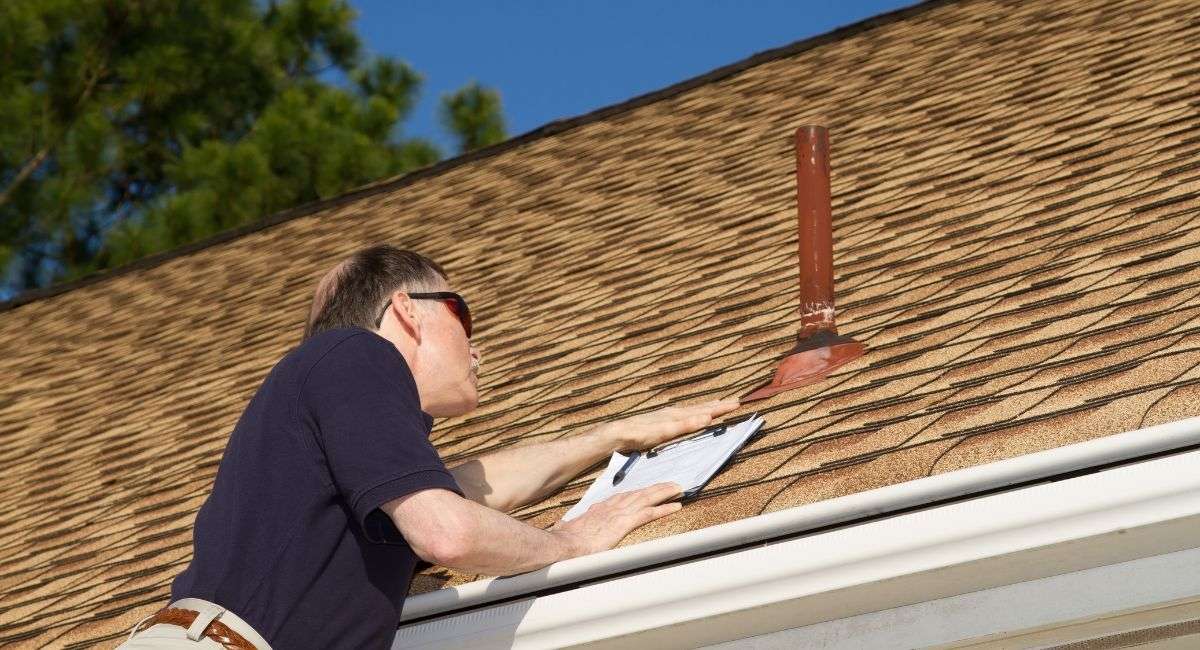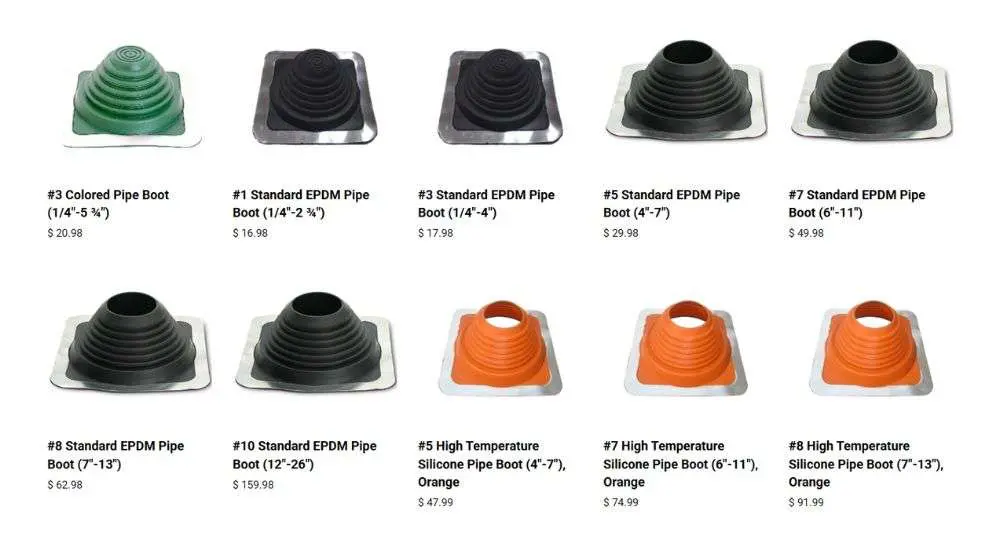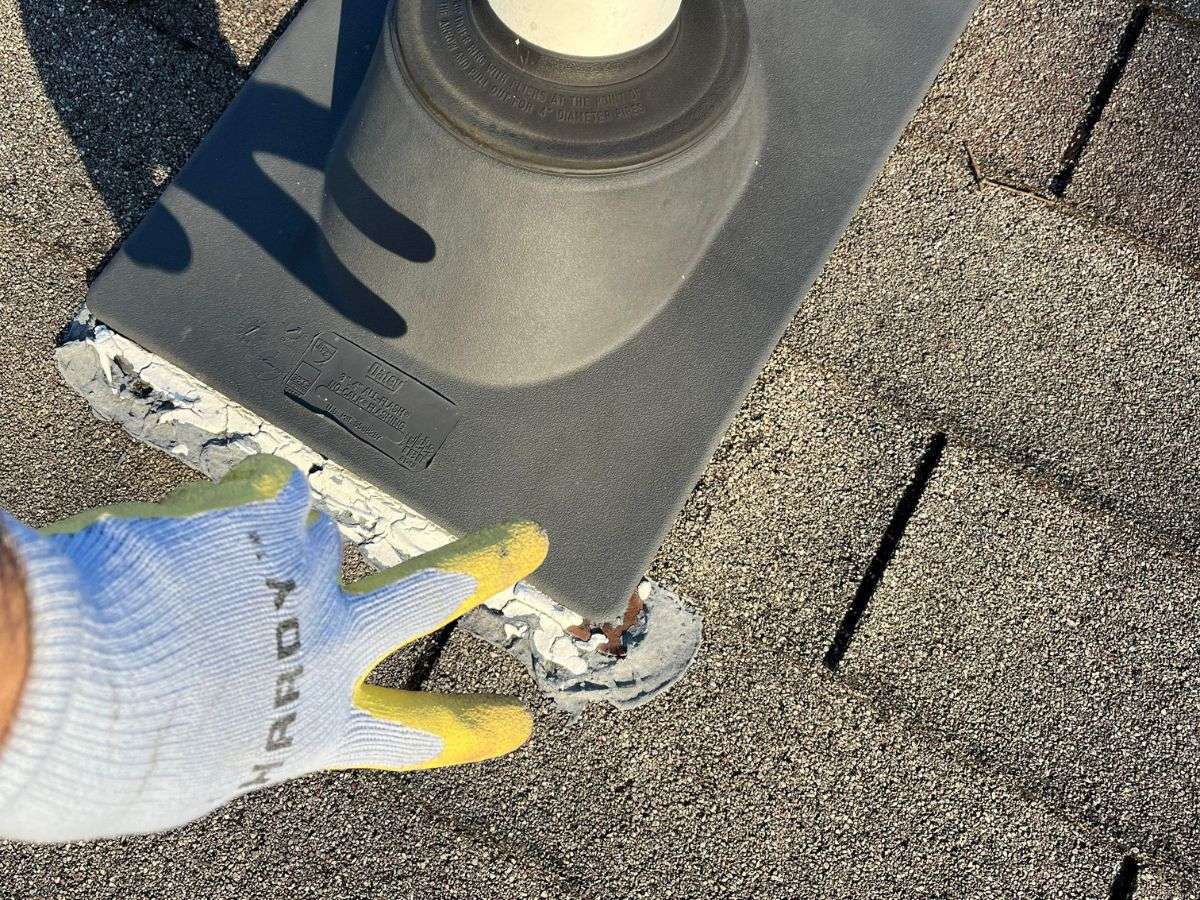The Ultimate Guide to Pipe Boots for Roofing

When you think about your roof, you probably picture shingles and gutters, but some of the most important parts are the small ones you might overlook—like pipe boots (also called plumbing boots or pipe flashings). These seal plumbing pipes, vents, and other roof openings, keeping your home dry.
Without pipe boots, every hole in your roof could let water in, causing costly damage. This guide explains what pipe boots are, why they matter, how to install them, common issues, and how to fix them.
What Are Pipe Boots and Why Do They Matter?
Pipe boots may not stand out, but they play a crucial role in protecting your home. These flashing pieces fit snugly around roof pipes—like home plumbing vents or HVAC exhausts—to seal openings and keep water, snow, and ice out of your roof and attic.
Think of pipe boots as shields for your roof’s pipes. Made from durable materials like rubber, silicone, neoprene, plastic, or metal, they handle extreme weather and sun exposure to keep your roof safe and dry.

There are a number of types of pipe boots, each for a specific type of venting and sized for their specific application.
Why Venting and Pipe Penetrations Matter
Ever wonder why pipes stick out of your roof? They’re essential for your home’s systems:
- Plumbing Vents: These let air flow through your plumbing system, helping water drain and preventing sewer gases from entering your home.
- HVAC and Appliance Vents: Furnaces, water heaters, vent stacks, and exhaust fans release gases, moisture, or stale air, often through the roof.
While necessary, these openings can lead to leaks if left unsealed. Pipe boots allow roof vents to function while keeping your roof watertight.
How Pipe Boots Prevent Leaks
Pipe boots stop leaks by sealing roof penetrations. Here’s how:
- The Collar or Sleeve: This flexible piece hugs the pipe and adjusts to movement without breaking the seal.
- The Base or Flange: The flat section directs water flow, sitting over lower asphalt shingles and under upper ones for drainage.
- Sealants: Roofing cement or caulk adds extra protection at the edges of the flange and where the collar meets the pipe.
These small components are your roof’s first line of defense against leaks. Keep them in good condition to protect your home.
Types of Pipe Boots: Materials and Design
Choosing the right pipe boot depends on pipe size, roof type, climate, and budget. Here’s a quick breakdown:
- Plastic Boots: Affordable but prone to cracking or brittleness, especially in harsh weather or sun.
- EPDM Rubber Boots: Flexible, UV-resistant, and last 10-15 years. A reliable and popular choice.
- Silicone Boots: Extremely durable and flexible, withstand extreme temperatures, and outlast EPDM, though more expensive.
- Metal Boots (Galvanized Steel or Aluminum): Long-lasting, resistant to wear and UV damage, with a rubber collar for a tight seal.
- Lead Boots (T-Tops): Durable and flexible but now less common due to environmental concerns, often seen on older homes.
Split Boots (Retrofit Boots): Open up to wrap around pipes with obstructions, providing an easy and secure seal.
How to Install Pipe Boots for a Watertight Seal
Proper installation is crucial to prevent leaks. Even the best boot won’t work without correct setup. While steps vary by roof and boot type, here’s a general guide:
- Prep the Area: Identify the pipe location, cut a properly sized hole, and clean the surface.
- Fit the Boot: Slide the boot over the pipe so the collar fits snugly. The base should sit flat on the roof or lower shingles.
- Secure the Boot: For shingle roofs, tuck the top of the flange under the next course and nail it in place. Seal exposed nails to prevent leaks.
- Seal the Edges: Apply roofing cement or caulk around the flange edges and collar for extra protection. Use sparingly to avoid issues.
- Check the Fit: Ensure the collar fits tightly around the pipe. Some boots have adjustable collars or pre-scored rings for trimming if needed.

You can see examples of excessive caulking and poorly fitting boots, both allowing water into your roofing structure.
Common Problems with Pipe Boots
Pipe boots protect your roof but are a common source of leaks. Here are the most common issues to watch for:
- Material Wear and Tear: Rubber, neoprene, or plastic in pipe boots often doesn’t last as long as your roof.
- Sun and Weather Damage: UV rays can make the material brittle, causing cracks. Freezing, thawing, and hail can also weaken or damage it.
- Poor Installation: Improperly installed boots fail faster.
- Sealant Issues: Sealant around the boot’s base may be poorly applied or missing.
- Shingle Problems: Incorrect layering with shingles lets water seep underneath.
- Sizing Errors: Boots that are too loose or tight leave gaps for water.
- Fastener Problems: Missing or misplaced nails can cause the boot to shift over time.
- Uneven Base: If the boot doesn’t sit flat, water can pool and leak through.
- External Damage: Falling branches or animals can damage the boot.
- Debris Build-Up: Leaves and debris around the boot trap moisture, speeding up wear.
- Aging: Even well-installed boots wear out over time and need replacing.
Spotting the Problem: Is Your Pipe Boot in Trouble?
Catching pipe boot issues early can save you from costly repairs. Check for:
- Cracks or Splits: Inspect the collar and base for brittleness or damage.
- Sealant Problems: Look for cracked, peeling, or missing caulk.
- Ceiling Stains: Water stains near vent pipes could indicate a leak.
- Attic Moisture: Check for water, mold, or rot near vent pipes after rain.
- Visible Gaps: Gaps between the pipe and boot or where the boot meets shingles are a red flag.
Think You’ve Got a Pipe Boot Problem? Here’s What to Do
If you suspect damage to your pipe boot, don’t wait—what starts as a minor issue can quickly escalate into leaks, mold, or even structural damage. Reach out to a local roofing professional for an inspection and necessary repairs.
For homeowners in Tennessee or Georgia, Roof MD is here to help. We provide free roof inspections to assess the condition of your pipe boots and overall roofing system. Whether you need repairs or replacements, our high quality team knows local codes and is ready to keep your home protected.
